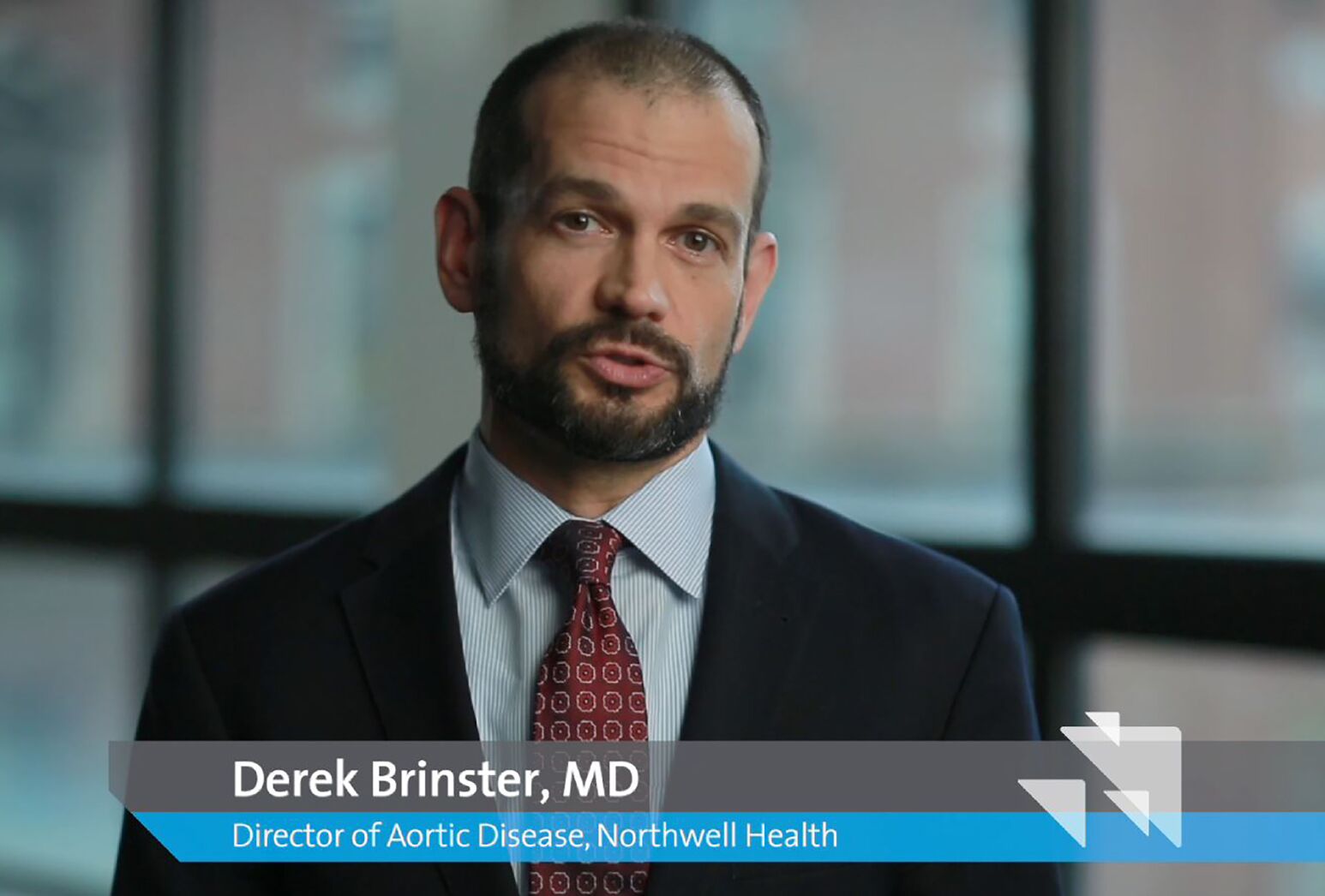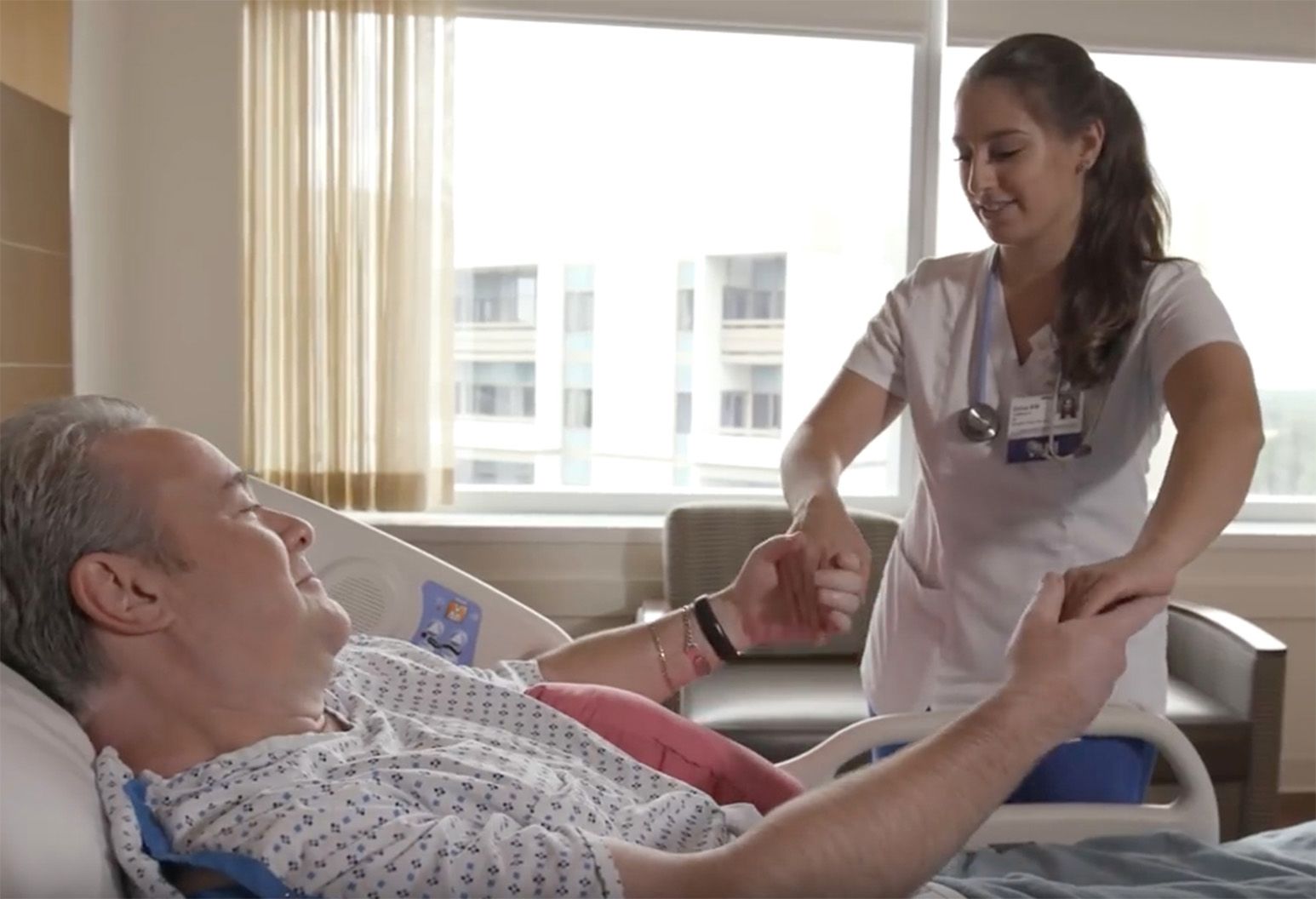Aortic aneurysm and dissection
What is aortic aneurysm & dissection?
The aorta, the body's largest artery, extends upward from the top of the left ventricle of the heart (ascending thoracic aorta), then curves like a candy cane (aortic arch) downward (descending thoracic aorta) into the abdomen (abdominal aorta). The aorta delivers oxygenated blood to the rest of the body. The heart pumps blood out of the left ventricle, through the aortic valve, and into the aorta. Aneurysm is the primary problem that may affect the aorta; the blood vessel may become enlarged beyond its normal size.
- Dissection – A dissection is a tear in the intima of the aorta, causing a false lumen (blood passageway) in the aorta.
- An ascending aortic dissection develops in the aorta closest to the heart. It can cause stroke, heart attack, heart failure and cardiac tamponade. The rate of death for an ascending aortic dissection is approximately 1 to 2 percent per hour for the first 48 hours.
- A descending aortic dissection is a tear in the descending aorta. It travels down the aorta and may extend the entire length of the aorta. Approximately 10 percent of descending aortic dissections will require an interventional procedure during initial hospitalization.
- Aortic valve disease – Regurgitant tricuspid or bicuspid aortic valves can be associated with aneurysmal disease. In many cases these valves can be repaired.
- Connective tissue disorder – Patients with connective tissue disorders (e.g., bicuspid aortic valve disease, Marfan's syndrome, Ehler-Danlos syndrome) are at higher risk of developing aneurysms at a younger age. They also have a higher incidence of dissection and rupture.
- Aortic root and aortic valve endocarditis – Aortic root endocarditis can very quickly lead to extensive destruction of heart tissue. Prompt intervention is necessary.
- Aortitis – Aortitis (Takayasu disease or giant cell arteritis) can lead to either stenosis or aneurismal dilatation of the aorta and its branches.
- Abdominal aortic aneurysm – Also known as AAA or triple A, abdominal aortic aneurysm is a bulging, weakened area in the wall of the abdominal aorta, resulting in an abnormal widening or ballooning greater than 50 percent of the vessel's normal diameter. The most common location of arterial aneurysm formation is the abdominal aorta, specifically, the segment below the kidneys. An abdominal aneurysm located below the kidneys is called an infrarenal aneurysm.
Symptoms
Abdominal aortic aneurysms may be asymptomatic (no symtoms) or symptomatic. About three of every four abdominal aortic aneurysms are asymptomatic. Since abdominal aneurysm may be present without symptoms, it's referred to as the "silent killer" because it may rupture before being diagnosed.
Severe or dull pain is the most common symptom of an abdominal aortic aneurysm, and may be located in the abdomen, chest, lower back or groin area. It often is associated with the imminent rupture of the aneurysm. Abdominal aortic aneurysms may also cause a pulsing sensation, similar to a heartbeat, in the abdomen. Acute, sudden onset of severe pain in the back and/or abdomen may represent rupture and is a life-threatening medical emergency. The symptoms of an abdominal aortic aneurysm may resemble other medical conditions or problems. Seek immediate medical attention
Causes
Many diseases and conditions can cause the aorta to enlarge. It can grow as a result of:
- Atherosclerosis or degenerative aneurysm (hardening of the arteries) – An atherosclerotic aortic aneurysm is usually caused by a degeneration or breakdown in the aortic wall. Over time, this weakened area of the aorta can enlarge to several times the normal size placing it at risk for rupture
- Connective tissue disorders (such as Marfan’s syndrome, Ehler-Danlos syndrome, polychondritis, scleroderma, osteogenesis imperfecta, polycystic kidney disease and Turner syndrome)
- Dissection or tear – An aortic dissection, usually caused by high blood pressure, is a serious condition in which there is a tear in the wall of the aorta. As the tear extends along the wall, blood can flow between the layers of the blood vessel wall (dissection)
- Hypertension (high blood pressure)
- High cholesterol
- Smoking
- Injury
Risk factors
Two-thirds of those who have an aortic dissection are male. The U.S. Preventive Services Task Force recommends that men aged 65 to 75 who were or are smokers have an ultrasound screening for abdominal aortic aneurysms, even if they have no symptoms, because those former or current smokers are three to five times more likely to develop an abdominal aortic aneurysm. More Caucasians than African-Americans have abdominal aortic aneurysms, for which men and people aged 65 and older are more at risk. Thoracic aortic aneurysms are more common with increasing age, with men and women equally at risk.
Diagnosis
In addition to a complete medical history and physical examination, diagnostic procedures for an aneurysm may include any, or a combination, of the following:
- Computed tomography (CT or CAT) scan – This diagnostic imaging procedure uses a combination of X-rays and computer technology to produce horizontal, or axial, images (often called slices) of the body. A CT scan shows detailed images of any part of the body, including the bones, muscles, fat and organs. CT scans are more detailed than general X-rays.
- Magnetic resonance imaging (MRI) – This is a diagnostic procedure that uses a combination of large magnets, radio frequencies, and a computer to produce detailed images of organs and structures within the body.
- Ultrasound – An ultrasound uses high-frequency sound waves and a computer to create images of blood vessels, tissues and organs. Ultrasound is used to view internal organs as they function and to assess blood flow through various vessels.
- Arteriogram (angiogram) – This X-ray image of the blood vessels is used to evaluate various conditions such as aneurysm, stenosis (narrowing of the blood vessel) or blockages. A dye (contrast) will be injected through a thin flexible tube placed in an artery. This dye makes the blood vessels visible on an X-ray.
Treatments
Procedures performed for these conditions include:
- Aortic root surgeries
- Valve-sparing aortic root procedures
- Aortic arch surgery
- Open and minimally invasive procedures (endovascular)
- Traditionally, aortic aneurysms are treated with a long incision in the skin to open the chest or abdomen. Different procedures are required depending upon the location of the aneurysm. The damaged segment of the aneurismal aorta is opened and replaced with a graft made of artificial material. This approach has been used for decades and has proven very successful.
- Endovascular abdominal aortic aneurysm repair is surgery to fix a widened area of the aorta. Some patients may benefit more from this technique, especially older individuals with related medical conditions. A catheter is threaded into the body through the groin with an endograft that re-lines the aneurysm from the inside of the artery. An endograft is a wire scaffolding with attached fabric that reinforces the weak spot in the aorta. By sealing the area tightly with the artery above and below the aneurysm, the graft allows blood to pass through it without pushing on the aneurysm. The endograft extends from above to below the aneurysm, excluding the aneurysm from the circulation and thus preventing rupture. These procedures are called EVAR, TEVAR and FEVAR. The use of endovascular stent grafts is particularly beneficial for a rapid recovery.
- Hybrid operations – Patients who are not candidates for stents may be candidates for hybrid operations, which involve use of stents to reroute the blood supply. These innovative techniques have led to a significant simplification of complex aortic problems.
- Elective and emergency surgeries
- Thoraco-abdominal aortic surgery (TAAA)
- Annual CT scans or MRAs (magnetic resonance angiograms) for small aortic aneurysms
We put all of our heart into creating one of New York’s best cardiac surgery programs. See how we care for patients differently.
Our experts discuss how we look at aortic disease.


